The Best Water Purifiers for Travel in 2024
We may earn a commission from purchases you make after clicking links on this site. Learn more.It’s only when you’ve been traveling for a while in countries with unsafe water that you truly appreciate being able to drink what comes out of the tap back home.
Sure, you can usually buy bottled water cheaply in those countries, but you’re not always sure where it came from. The environmental impact of plastic bottles is also hard to ignore when you see them washing up on the beach around you.
Water purifiers can give you the best of both worlds: clean, safe water on demand, without destroying the environment in the process. They’re a varied lot, though, and picking the wrong one can leave you with foul-tasting water and major stomach problems.
You’re looking for something that will kill bacteria, cysts, and viruses. It’s the last of those in particular that many devices won’t destroy.
At a minimum, you need something that won’t make the water taste worse than it already does. Ideally, it should also filter out particulates, chlorine, and metals so that the water tastes better than when you started.
Finally, it needs to be appropriate for travel: light, robust, and reliable, at a price that won’t break the bank. There aren’t many that fit the bill, but luckily there are a few. Here are six of the best water purifiers for travel (or daily life) right now.
What to Look For
There’s a surprising amount of diversity among purifiers, with each type offering its own approach to creating safe drinking water. The environment you’ll be using it in, how much water you need to purify, size, weight, convenience, and more all need to factor into your buying decision.
With that mind, these are the key things you need to consider when shopping for a water purifier for travel.
Filtration/Purification Technology
The type of filtration and purification technology being used is obviously the most important factor to consider here: there’s not much point having a water purifier that you can’t rely on to actually purify your water.
There are different approaches available, though, each of which comes with its own set of upsides and downsides. Carbon filters, for example, are better at removing contaminants like chlorine and lead, and can still be effective even if there’s a little sediment or other physical impurities in the water.
Ultraviolet light generally does a better job of destroying bacteria and viruses, but you need clear water to start with. This may mean an additional filtering step before, or you may just need to be more careful with your water sources.
Contaminants
Water purifiers mention the contaminants they can filter out, and to what degree. If you know there’s a specific set of contaminants in your usual drinking water sources, be sure that they’re well-covered, but otherwise look for as wide a range as possible.
Most can handle bacteria and cysts reasonably well, but viruses are much smaller and not all types of purification can remove them. Since you don’t know what you’re likely to encounter in the water supply when you’re traveling in particular, keep an eye out for specific mention of virus removal as well.
Different types of contaminant are likely to be removed at different levels of effectiveness. For example, the CrazyCap Pro’s fine print says it can kill 99.99999% of E.coli bacteria, and 99.8% of nontuberculous mycobacteria.
The higher the number, the better, but with any product like this, try to find out if the claims are backed by independent testing if possible.
Pore Size
Pore size refers to the size of the holes in a water purifier’s physical filter. The smaller the pore size, the more effective the purifier will be at removing contaminants from your water.
For those purifiers using a physical filtration method, I recommend looking for models with a pore size of less than 0.2 microns. That’s small enough to capture almost all bacteria and protozoa, but it’s not enough to get rid of viruses.
For that reason, pore size isn’t the be-all and end-all when it comes to purification: you’ll need to consider other factors and/or technologies to get a fully-protective solution.
Filtration Mechanism
Most purifiers use a pumping mechanism that forces water through a filter. This is an effective way to remove small amounts of dirt and sediment, along with other impurities like lead and chlorine. As a rule, though, always start with the clearest water you can find, to extend the life of your filter.
The pumping method varies between purifiers. Some use a handle similar to what you’d find on a bicycle pump, while others are built more like a coffee press, forcing water through a filter by pushing down on the lid.
For those that use ultraviolet light to do their purification, there’s less physical effort required. Instead, you just need a little patience. Some of these models are separate devices that you place into whatever container you’re using, while others combine the container and UV lamp in one.
Whichever option you go for, you’ll usually just start the purification process and wait a short while (typically 2-4 minutes) before your water is ready to drink.
Water Flow
Water flow refers to the rate at which water is filtered, which varies significantly between devices. Some water purifiers can filter up to 700ml of water (25oz) per minute, for instance, which is great if you’re in a rush and need quick access to clean drinking water.
However, higher flow rates come with drawbacks, too. These water purifiers are typically larger and heavier than slower models, making them less ideal for travel, and they’re often more expensive. Look for a system that provides enough water flow to meet your needs while remaining light and compact.
Design
Water purifiers come in a number of different designs and styles, some of which are more appropriate for travel than others. A water bottle-like approach is most common, since it’s a convenient and lightweight option that lets you store the water inside after it’s been purified.
If you already have a drink bottle or other container you love, however, you can also go for a standalone device like the Steripen. This small handheld device uses UV light to purify water, and you simply dunk one end into your cup or bottle and leave it for a few minutes.
If purifying larger quantities of water is important, you can also find portable pumping systems that come with tubes you can use to draw water from a source like a lake or river. This greatly speeds the process up, at the cost of a larger, heavier device.
You may also encounter gravity bags, which are purifiers that rely on gravity to filter water. They have the advantage of needing neither batteries nor physical exertion, but they’re typically extremely slow. As a result, we don’t recommend them for most people.
Filter Replacement Schedule
If your purifier uses a physical filter of some sort, it will need to be replaced regularly so it can continue to work effectively. The frequency of filter replacements will depend on the type of filter and (especially) how much you use your device.
Most filters are rated to handle a certain amount of liquid passing through them before they become ineffective, and many also have an expiry date after which they need to be replaced regardless. They’ll also become less effective if you regularly filter out dirt, sediment, and other particulates.
Our advice is to treat any quoted capacities and expiry periods as a best-case scenario rather than a guarantee, and to travel with a spare filter if there’s any danger of your current one stopping working during your trip.
Durability
Aside from checking the filter’s lifespan, you should also factor in the overall durability of your water purifier. You’ll want a product that is built to last through different weather conditions and outdoor activities, and either comes with a hard travel case or can handle a bit of rough treatment.
Look for sturdy materials, and if it’s a water bottle-style device, an ergonomic shape that makes the system easy to hold onto while on the go. A handle is useful here as well, along with things like attachment points for carabiners and clips.
Safety Standards
If the product you’re looking at doesn’t mention any safety certifications, don’t purchase it. Any water filtration or purification system has to meet minimum safety standards if you’re going to entrust your physical health to it.
Look for products that have been certified by the National Sanitation Foundation (NSF) and the American National Standards Institute (ANSI). These organizations test products to ensure they meet safety standards for drinking water.
Mouthpiece
If you’re using a water bottle-style purifier, the mouthpiece is often a surprisingly important factor. Some have an inbuilt straw that can be stored away when not needed, while others have small or large openings to drink from. I typically prefer smaller ones since they’re easier to use on the move, but it’s largely a personal decision.
Battery Life
If you’re interested in a UV light water purification system, pay attention to the device’s battery life, along with the type of battery it uses.
Some of these type of purifiers are powered by an inbuilt rechargeable battery. If so, check how many activations they’re typically expected to last before you need to charge them up again, especially if you plan to rely on it while hiking or somewhere else you don’t have reliable access to power.
Others just use standard disposable AA or AAA’s. If that’s the case, be sure to keep an extra set in your bag: you don’t want to be left without clean drinking water due to a flat battery!
Steripen Ultra

Probably the most well-known portable water purifier, the various models of Steripen use a UV lamp to kill the bugs and bacteria. You just dunk the lamp into a cup or water bottle, stir for a minute or two, then drink. It’s a straightforward and inexpensive process, but it does have some limitations.
Firstly, it only purifies: there’s no filtering mechanism. This means you can’t use cloudy/dirty water with it, and while the treated version is unlikely to make you sick, it won’t taste any better than when you started.
The reliance on battery power also isn’t ideal, although at least this Ultra model charges via USB. Cheaper versions use hard-to-find disposable batteries, which is the last thing you need when you’re in the middle of nowhere.
While it’s good to be able to purify water in any vessel, I’d rather carry a bottle with a UV lamp built-in like the Crazy Cap (below). That way I could purify when necessary, and just use it as a normal water bottle the rest of the time.
Still, if you only want a small, lightweight purifier and the water you’re using is reasonably free of dirt and minerals to start with, the Steripen Ultra is a simple and effective option.
Buy on AmazonCrazyCap

Despite the silly name, the CrazyCap Pro is a stylish and effective water purifying bottle with a couple of tricks up its sleeve. Like the Steripen it’s UV-powered, so it does a good job of killing bacteria, cysts, and viruses in clear water, but won’t purify cloudy or dirty water, heavy metals, or other physical contaminants.
The UV lamp is built into the cap, which has a universal screw top for attaching to any bottle with a similarly-sized neck. This lets you use the CrazyCap Pro to purify water in bottles other than the one it comes with, so if you have a favorite water bottle already, you can buy the cap separately instead.
If you do use the company’s stainless-steel bottle, though, you’ll benefit from its insulation. It’ll keep drinks cold for up to 24 hours, or hot for up to 12 hours. There’s a range of attractive colors available: I particularly like the classic blue, but would be happy toting just about any of them.
Using the CrazyCap Pro is about as simple as it gets: fill the bottle, screw on the cap, and tap. Two taps starts the standard one-minute purification process, while five taps enables an extra-strength three-minute purification.
You don’t need to do anything else except wait, making this one of the most straightforward purifiers I’ve come across. The cap also automatically activates for 20 seconds every hour, to help kill mold and bacteria and prevent the bottle from smelling.
The charger fits over top of the cap and uses a standard USB cable. The battery should last at least a week of normal use, and recharges in a few hours. Being able to do this from a portable battery or solar charger is handy for camping and hiking trips where mains power isn’t available.
Rated to last half a million cycles, and able to kill a remarkable 99.99999% of E.coli bacteria in Pro mode, the CrazyCap Pro is one of the best water purifiers for cleaning clear water.
Buy on AmazonDrinksafe Travel Tap
There are several different models of purifier in the UK-made Drinksafe range, but my preference is the “Travel Tap” for one simple reason. As well as sucking water through the filtering/purification mechanism like the other models, you can also use the Travel Tap by gently squeezing the bottle.
This simple change greatly increases its usefulness, letting you do things like rinse your toothbrush and irrigate wounds with clean water.
I also like that you can remove the filter mechanism if you know the water is safe, meaning you don’t use it up unnecessarily. A lanyard and insulation sleeve are included in the package.
The Travel Tap has an 800ml capacity. It can purify up to 1600 liters of water before the auto-shutdown mechanism kicks in and the filter cartridge needs replacing. That’s pretty good: if you’re drinking two liters a day, it’s over two years of daily use.
Water flow is around 300ml/minute. That’s fine most of the time, but perhaps a little frustrating if you’re particularly thirsty.
GRAYL UltraPress Purifier Bottle
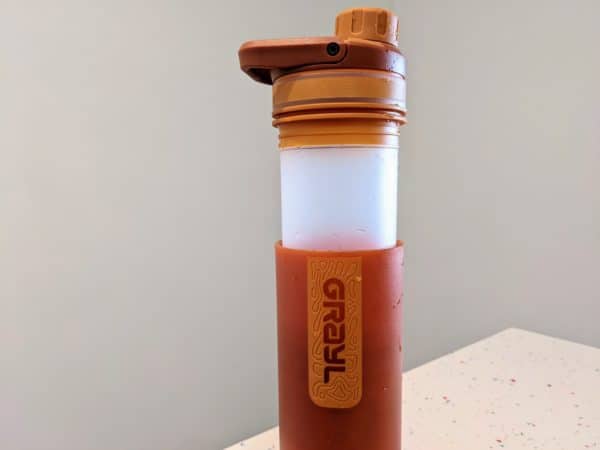
There’s plenty to like about the GRAYL UltraPress. Rather than using a straw or manual pumping mechanism, this purifier works more like a coffee press. You fill the bottom part up with water, attach the top part, and press down.
Thirty seconds later, you’ve got a bit under 17oz (500ml) of clean water in a stylish container. It’s super-simple and reliable, and the filter eliminates pretty much everything including viruses.
So what don’t I like? Well, a couple of things. The capacity is a bit low: you’ll get through half a liter pretty quickly in hot countries. Of course, being able to fill it up again from almost any water source negates that problem somewhat, but not entirely.
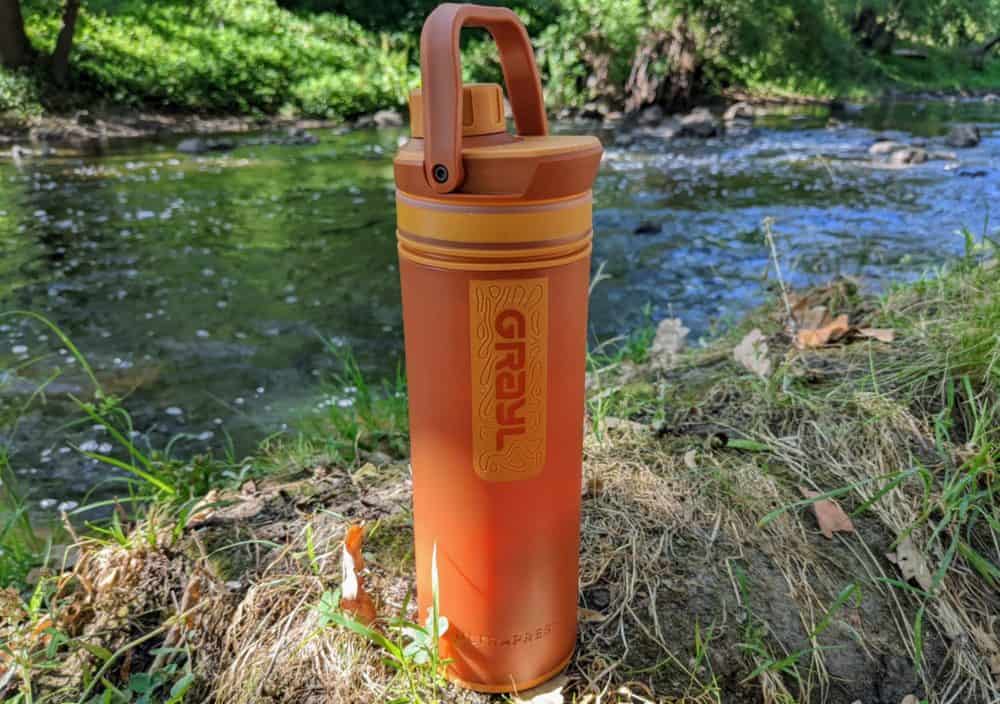
If you need the extra capacity, you can opt for GRAYL's Geopress model instead. It works in much the same way, but purifies 24oz (710ml) of water at a time. The trade-off? It’s bigger and heavier.
Secondly, it’s more expensive for lengthy trips than some of the other options. The filter only treats 150 liters of water before it needs replacing, assuming you can find one wherever you happen to be. I’d suggest taking an extra filter from home if you’re likely to need it.
Overall, though, the GRAYL UltraPress is an effective and easy-to-use water purifier that’s ideal for trips up to a few weeks long. I’ve used it extensively during my travels, and it hasn’t failed me yet. You can find my full review here.
Buy on AmazonSurvivor Filter Pro

While it’s really aimed more at hikers and back-country campers, the Survivor Filter Pro works well for travelers as well. At just over 8oz (230g) it’s a lightweight option, and a manageable 3.2 x 2.0 x 6.5″ in size.
The Filter Pro has three-stage filtration, with the carbon filter capable of handling 2000 liters before needing replacement, and the other two filters handling up to a huge 100,000 liters.
You can push up to 17oz (500ml) of water a minute through the Filter Pro, which is more than fine when traveling as a couple or individual. You can filter a liter or two of water in a few minutes before heading out for the day.
The company touts the efficiency of its 0.1-micron filters, particularly for dealing with heavy metals that most other systems can’t touch.
Reasonably priced and with an easy-to-use pumping mechanism, the only minor flaw for travelers is the tube-based intake mechanism. It works very well for filling from rivers and lakes, but can be a bit fiddly to use from a tap. Still, there’s always the sink!
Buy on AmazonGet regular updates from the world of travel tech and remote work
News, reviews, recommendations and more, from here and around the web
Which Would I Buy?
So, crunch time. If I had to buy a new water purifier for an upcoming trip, which would it be? All things considered, I’d go for the GRAYL UltraPress for most short to medium-length trips. It’s effective, durable, and easy to use, at an affordable price, and both models that I’ve owned have proven highly reliable.
Being able to filter out light sediment and other particulates, while still having the option of using the filtered water outside the bottle, makes it more useful than many of the alternatives.
Since the purified water stays inside the GRAYL, there’s no need to carry a separate bottle or container as well, which is useful in keeping the weight down. For all those reasons, it’s my pick for the best water purifier for travel, and the one I take with me on trips to places where I know I can’t drink the tap water.
If I was confident I’d only need to filter water that wasn’t contaminated with particulates or heavy metals, I’d also consider the CrazyCap Pro. It’s more stylish than the rest, with excellent protection against E.coli, and the insulated bottle makes it particularly appealing.
Unlike a filter-based purifier, the UV lamp lasts hundreds of thousands of cycles, so there are no concerns about having to find replacement parts mid-trip.
Do you carry a water purifier? Which one, and why?
Main image via Olichel, product images via Amazon.

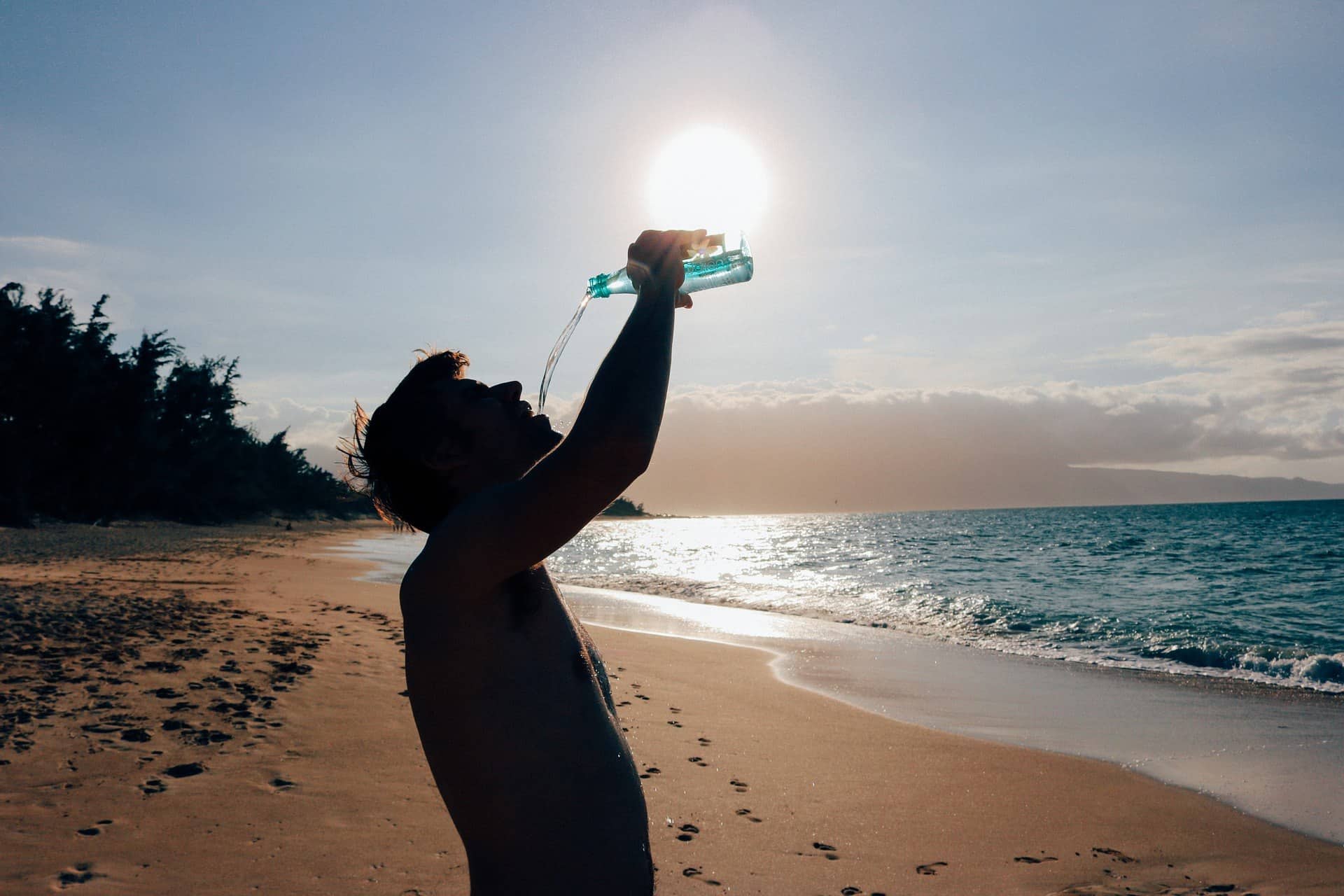
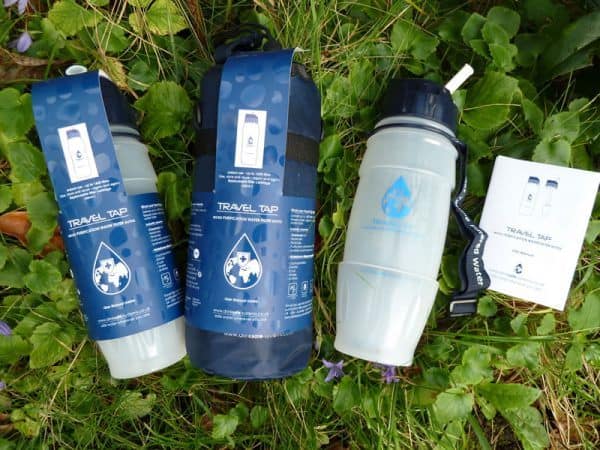
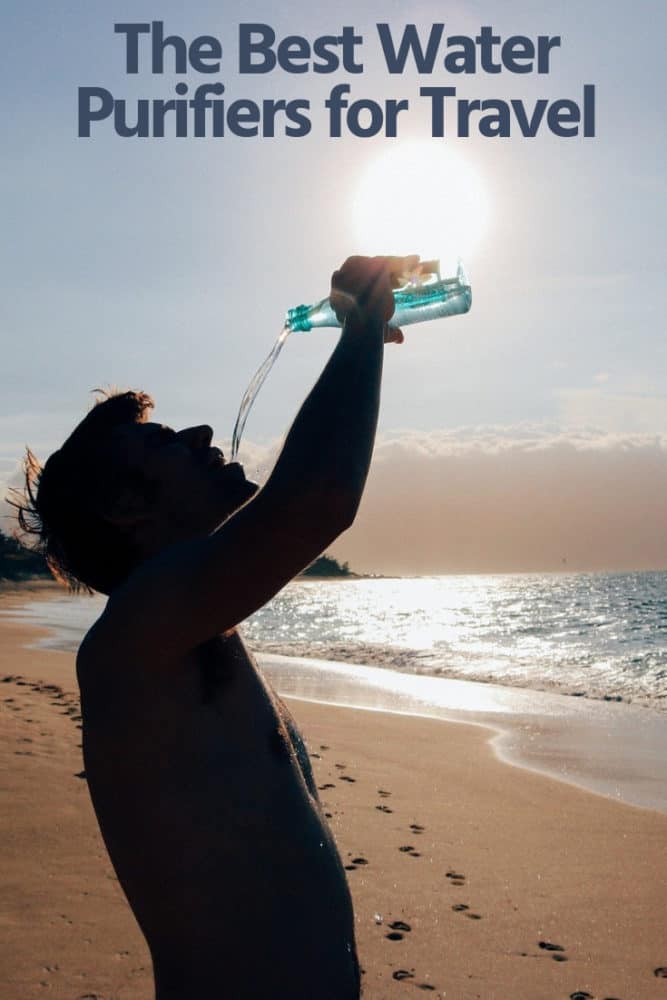
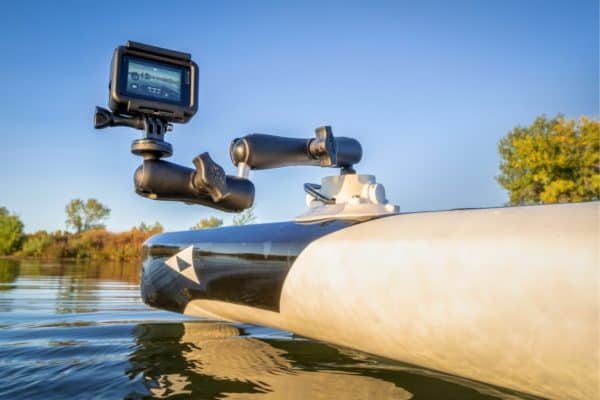
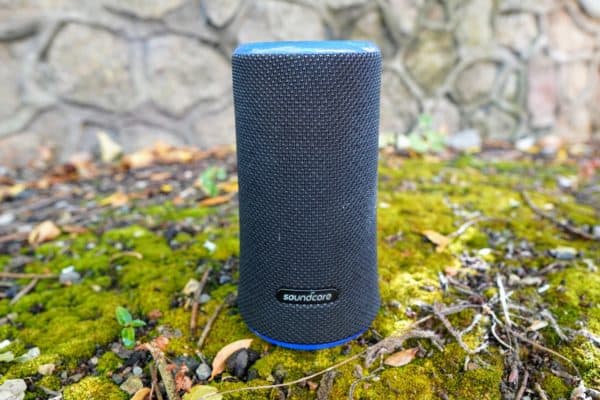
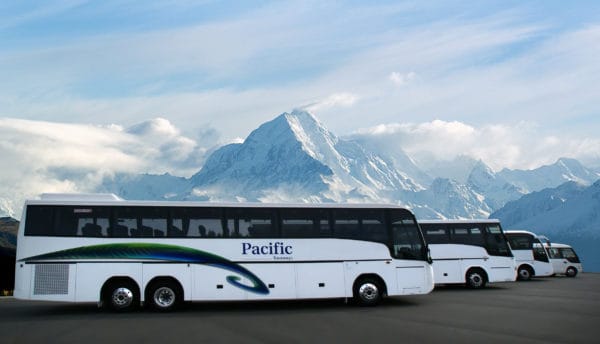
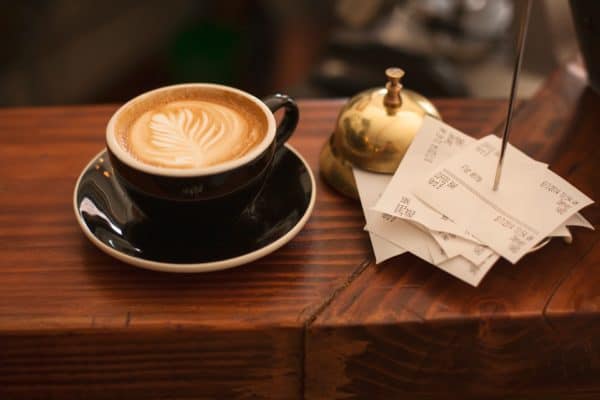
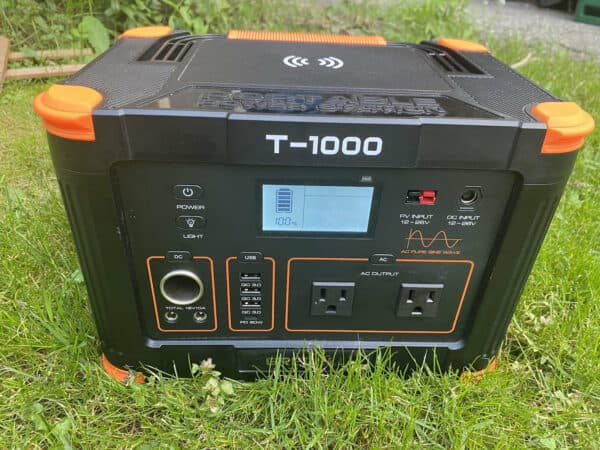
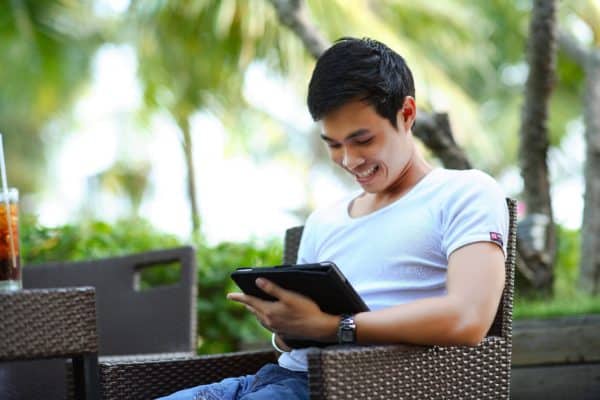
I have a water-borne enterovirus from being given well water as a baby on the family farm in the US. I have a diagnosis of Immunology Deficiency Subclass (IgG 3, IgG 4 & IgM) as well as Chronic Fatigue Syndrome. Contaminated water is no joke.
I researched this topic. I bought the Seychelles water bottle. It’s certified my multiple US and UK agencies. It works well to clean water. It’s cheap, light and you can get different filters for radioactive water (Japan post nuclear meltdown), city water, stagnant water, etc. The owner of Seychelles started Pur Water and sold it. Then he started Seychelles.
I went to my tailor to have a carrying sling made.
Then I left the country. I found the water bottle filter method difficult. I had to squeeze the bottle and suck….. Hard. This requires 2 hands which is inconvenient. I prefer to only use 1 hand. I had a difficult time sucking up the water. You have to suck hard to pass the water over the filter. I abandoned my water filter bottle and bought bottled water instead. I have a bottle for sale with loads of extra filters. Let me know if you want to buy it. Maybe you can find it more useful than I did?
I’m going to buy the largest LifeSaver bottle next. I’m getting away from the water filter straw.
I hope that helps.
Thanks Anja, great information. I definitely think the all-in-one, pump/squeeze versions are best — easier to use, for a wider range of things.
you missed few things in the life saver bottle information.
I’m a huge fan of SteriPens. My wife and I have been using it for years and never had any issue. I pair it with a collapsible Nalgene bottle… compact, light, easy to use, water taste (if an issue) is easily over come with any of the powdered or liquid flavor packets available pretty much everywhere. No “sucking” not carrying around a heavy filter you don’t need and not purifying water that doesn’t need to be purified.
Yeah, within its limitations its a good device. I must admit that my personal experience wasn’t as good as yours — I started my trip with one that was working, and the first time I went to use it (which was admittedly a few months later) it didn’t work. Even after replacing the battery (which wasn’t so easy to find, because it was the C123A type), the lamp just didn’t want to light up, even when immersed in water. I didn’t mention it in the article, because one bad experience doesn’t mean the product is flawed for everyone, but it did put me off a bit.
Hey Dave – sorry to hear that your Adventurer Opti didn’t operate as expected. We have a great Technical Support team that will be happy to troubleshoot or take a look at your SteriPEN. Have you contacted them? If not, please do! [email protected] or 888-826-6234. We want to make sure you have a working pen! – Julie @ SteriPEN
Hi Julie,
Thanks for the comment — no, I didn’t contact them, as I was travelling through SE Asia for several months at the time, and figured that without a local support center I could walk into, or me having a stable address for shipping, there wasn’t much that could really be done. I disposed of the dead Steripen after that, so unfortunately I no longer have it.
Great to hear, Rick! Glad to hear SteriPEN has been there for you on your adventures!
I bought the water2go bottle for my trip. I’ve had nothing but bad luck with it. My very first flight I managed to lose the silicone sleeve and it didn’t take long to find out that it leaks like crazy any time that it is not perfectly upright (which no matter how I place it in a bag it always manages to end up upside down – would be ok if it had a tab to put a clip through to hang it from my bag) I gave up on using it. I’m swapping it for a clearly filtered bottle which is waiting for me at home. I’ll be picking it up when I visit home before I go to Nepal and India.
Hi Jaimee, that’s useful info, thanks! I did read a couple of reviews that said something similar — it didn’t seem to be all that widespread a problem, but it sounds like it might be. Leaking water bottles in a daypack that often carries electronics is not a good thing!
Yeah, I had a bit of a freak out when it leaked on my camera the first week. Luckily I had it in a neoprene sleeve which didn’t let too much water through so the camera was fine. I’m using a clearly filtered bottle as of today. I can clip it on the outside of the bag which is helpful.
I have had my Seychelle bottle for 15 months and have had no problems with it at all. I take it with me wherever I go whether I’m abroad, at home or going to the gym.
Throughout years of traveling, I found myself at times ill (learning later the symptoms were dehydration) for disliking the taste and smell of some ordinary municipal tap water. That hasn’t happened once since I got my bottle and replacement filters at Amazon/ebay.
And I love imagining how much plastic I’ve saved from being created/recycled.
dude sawyer mini your missing whats hands down the best water filter!
Calvin – assuming you’re talking about this, then while it’s a decent lightweight, low cost filter, it doesn’t get rid of viruses. As I mentioned at the start of the post, that was a requirement — given what’s in the water in some developing countries, it’s something that’s very much needed in a device intended for travelers.
What would you recommend for tap water in Peru and Zambia?
Unfortunately I haven’t been to either country, so can’t make a specific recommendation — sorry!
Can water purifying tablets be used then any of the above? Any precautions while using those?
Do you have any thoughts about the Aquapure Traveller bottle? This also seems to filter viruses and looks quite good from what I can see. I’m currently trying to decide between then Aquapure and Traveltap.
Thanks!
Pete
Traveling to China for first time. Have Crohns and worried about water. What do you recommend
I’d suggest buying bottled water, and either tipping it into something like a Life Saver or treating it with a Steripen before drinking if you’re concerned about where that bottled water came from.
We are going on a cruise and the drinks package for water is high. What do you suggest as i am diabetic and 73 yrs old. JAR
Thanks for the thorough analysis Dave. Have you ever tried the Katadyn MyBottle Water Purifier? Any thoughts?
Hi Max,
I haven’t used it, no. The specs look good for the price, but the Amazon reviews are pretty mixed. There are reports of leaking, and several people saying it’s very difficult to suck water out of it. It might be worth trying out, but you’d want to make sure you could take/send it back if you weren’t happy with it.
Hi Dave, Im traveling to Jamaica and not positive on there water situation as I wouldn’t be staying at a resort. I found Life Straw Go Water Bottle and thought about getting that. But the drink safe one may also be good.
hi there!! I’m heading to sri lanka and then india for a month, any sugestion on what could be the best option, concidering the major issue that tap water represent over there? thanks
I drank bottled water without issue while in Sri Lanka, but haven’t been to India. In Sri Lanka, at least, it was easy to find and very cheap, and as I wasn’t travelling with a sterilizer of any kind at that point, made the most sense.
In India, I’d probably buy bottled water, then run it through something like the Travel Tap (above) in case the vendor had decided to refill the bottle with tap water. The stories about water-borne illness in India are legion, so I’d be looking to reduce that risk as much as possible.
thanks Dave!! but what I’m trying to do is to avoid(really hard) or minimize consuming plastic!! do u think it would be safe just refilling the Travel Tap(or any other) using water from the tap????
thanks again
I can’t make that determination for you, sorry. I don’t have personal experience of the water situation there, and the reports from other travellers aren’t great — I’d hate you to follow my advice and get sick!
I see! thats what I’m getting travel tap” seams to be the most accurate one for this trip! I’ll report how it goes!
thanks for replying!!
Is this safe for 3rd world country’s?
HI thank you for the post and the continued follow up replies. this has been very helpful with figureing out which filter/purifier to take on a trip. I was wondering now that Grayl’s prices have come down a lot (filters $25 and a non stainless steel option) would you consider it a better filter then the straw filters?
I do prefer the way the Grayl works, so as long as you’re happy with the smaller capacity and carrying extra filters with you, yup, I’d say it’s a better filter. As you say, the price is noticeably more reasonable now, at around $60 for the basic model and $25 for the filters.
hey there!
So my BFF and I are going to Cambodia in march. Neither of us have been over seas. She is allergic to iodine, would the steripen be enough for the water there?
I’m afraid I can’t give advice about suitability in a specific country — you’d want to contact the manufacturers, although I don’t know that they’ll commit either. On a personal note, I’ve always bought bottled water while in Cambodia.
I’m Traveling to Costa Rica. Any advice about buying water down there or traveling with filters etc?
Thanks in advance!
I haven’t been, unfortunately — although as mentioned above, I can’t give advice about water quality in individual countries anyway.
Hi Dave Dean,
Thank you so much for your report!
I am getting ready to start a graduate program that will have me studying in
India for 3 months.
I know you have no personal experience with that country, but I was hoping you could help me choose between the LifeSaver and the DrinkSafe Travel Tap?
While I do like to pack lite, I am a HEAVY water drinker, and I am very nervous about not having reliably safe drinking water. I figure it’s worth not bringing an extra pair of shoes if it means peace of mind 🙂
Any thoughts about the choice?
Thanks in advance!
Rachel
Either should last you the length of your stay in India. Whichever one you buy, I’d suggest getting it well ahead of time and testing it thoroughly for things like leaking, water flow rate, etc, to make sure you’re happy and can get a replacement or alternative if needed. Obviously you can’t test the purification part of it with tap water from home, but reviews of both filters talk about having used them in India with no problems. For extra security, it might be worth calling the manufacturers or distributors and asking them specific questions. 🙂
Hi Dave —
Could you advise on where to buy a Travel Tap bottle in the USA? Amazon says it can’t ship the bottle from the UK.
I can’t, I’m afraid. Maybe drop the manufacturer a mail through their site and see if they have a US distributor yet?
Will do. Thanks!
Hi Dave — I took your advice and contacted DrinkSafe directly. They could not have been quicker to respond or more helpful. They answered my questions, took my order, and shipped my Travel Tap — all within a matter of hours!
Oh that’s fantastic! So happy to hear it – and thanks for coming back to let me (and everyone else) know!
Hello,
I’m living in Shanghai where the quality of the tap water is very questionnable (metals, bacterias and maybe viruses). Do you know which bottle would suit me best ? (i’m also on a budget, so I would like to avoid the lifesaver for example)
Thanks in advance,
Remy
headed to SE Asia next month and i’m very interested in buying one of these. the right one, of course.
i want to be able to fill up with tap water anywhere and maybe even up in the mountains. it looks like travel tap would be the best with the squeeze action for toothbrushing/cleaning/filling. however, it also looks like they only ship to the UK…. am i reading this correctly?
Please see the comment from Delores a few days ago on how she got a Travel Tap shipped elsewhere in the world.
Hi,
I have the Grayl – Quest version since 2015 and it has been my travelling companion. I prefer it to the others cos’ of its ease of operation. Although on the pricey side but worth the investment.
My recent trip to Laos gave me quite a bit of savings with my Grayl with the tap filter (USD14.50). A 1.5L of bottled water cost Laos kip 5000 -7000 (USD 1 = Kip 8000). Assume 2L per day, for 10 days would be 20L i.e. 14 bottles which works out approx USD 9 based on Kip5000. Most places you would have access to tap water. Keep the purifier filter for remote areas.
After a flight especially on budget airlines or late at night upon arrival, with my Grayl, I no longer need to hunt for water.
Most tap water in SE Asia are fine but in doubt, use the purifier filter.
Hope the above helps in some way.
Cheers
Definitely helpful — thanks!
Grayl – been using one for a year, fill, squish, pour into lager container, has paid for itself many times over in free water and not to discount the value of health and peace of mind
Hey all, great read. I took Grayl for a test spin almost 6 months ago on a 75 mile trip from Sequoia National Park to the top of Mt Whitney. I absolutely loved it in the beginning but as the trip went on it became harder and harder for me to press down to filter.
Sounds like the filter maybe got clogged or wore out – the instructions say it’s time to replace it if pressing down gets more difficult.
Yep, it’s doing its job filtering out the junk, remember the cleaner the water you’re starting with in regard to floating solids the longer the cartridge will last before changes.
Have used a grayl for years now. First their original, now the ultralight. Love it, but yeah, limited capacity, which is actually fine cause you can easily refill a Camelback or other bottle from it, and I do wish the filters lasted longer. Saves so much money in hotels and airports, and hassle not having to go to the store to get water. Honestly though, would love to have something much smaller. I travel with a carry-on only, and it takes up a decent chunk of space.
I am reading many negative comments on other sites about the Grayl Ultralite … it apparently becomes increasingly difficult to use from day 2 to day 3 to day 4, etc. e.g. had to take all body weight, barely usable by day 4, filter only good for 20L not 150L, etc. … Dave, any comments about this? Many thanks in advance.
I can’t speak for other people’s experiences, of course, but that doesn’t match what I’ve seen. As an example, my girlfriend bought a GRAYL and took it to Mozambique for two weeks, using it multiple times a day while there. It worked fine throughout, and she was still using the original filter by the end of the trip.
I know the product is designed to get harder to push as the filter approaches the end of its life, and heavily-sedimented water will reduce its lifespan, but whether that’s what other reviewers are seeing, I can’t really say.
Ok thanks a lot Dave. I’ll go with your recommendation and give it a try, traveling to Bolivia for the month of June, and tired of lugging around plastic bottles and then wasting them.
I’m wondering if you’ve tried the Life Straw GO bottles? I’m heading to Nepal to teach in April.. . .
It unfortunately doesn’t filter out viruses, which is a key criteria for any product we’d consider for travelers.
I read some reviews that the Grayl leaks. Any experience with that?
None so far. My one is stil going strong — my partner is actually taking it with her on a trip to India later this week.
Seems like Grayl is a favorite around here. I’m heading to Ethiopia next month. Aside from Grayl, what other bottles do you recommend? I’m not sure what access we will have and the capacity is so limited.
When I’m going to places where I’m worried about finding enough water to purify, I take one of these sort of things along with me as a spare container. It folds down to virtually nothing in my bag, but I can purify an extra couple of litres in advance and carry it with me if I need to.
FIlteration can’t cope with chemical contamination. It needs ionization to break chemical chains at a molecular level.
Many people believe 0.1 microns can trim all chemicals. Unfortunately, the atomic level of the chemical chain is much smaller. Electrolysis & flocculation are required.
Measure PH, TDS at first, if PH is below 6, I would not consider
What’s your opinion on a sport berkey? I’m not sure if it removes viruses
It doesn’t, no, so I personally wouldn’t take it traveling with me.
Great article! I’ve use a Steripen (Pure+, also rechargeable) for some years and it’s an OK solution. In the article you mentioned “…I’d rather carry a bottle with a UV lamp built in”, so why not put one of those in the list? I’m aware of two options right now: LARQ or CrazyCap (yeh stupid name I know…). Of these I prefer the flexibility of the CrazyCap, but it needs a bulky proprietary charger and is only compatible with small bottles. I’d love to hear your thoughts if you’ve tried either!
Thanks Jade — I hadn’t come across either of those bottles in the past, which is why they’re not included! 🙂 They both look pretty good, and at least claim to kill viruses as well as bacteria.
They suffer from the same problem as the Steripen and other UV-based approaches in that there’s no filter, so whatever taste, chemicals, and heavy metals are in the water will stay there and the sterilization only works on clean (ie, clear) water, but other than that they seem well-reviewed and have some nice extras like being able to sterilize other small objects (Crazy Cap) and being insulated to keep drinks hot/cold (both).
We may well include one or both of them in the next update!